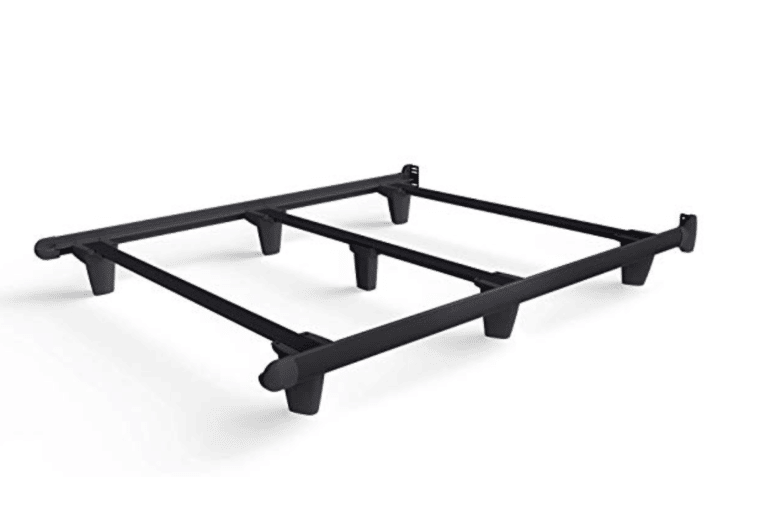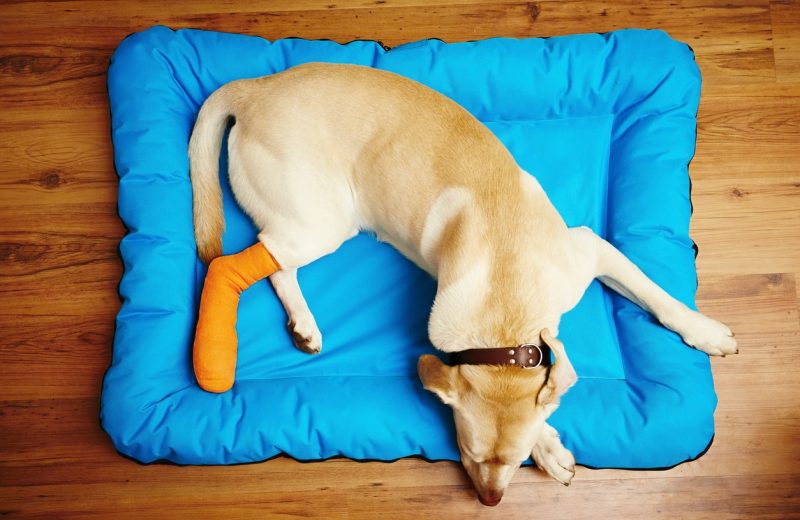
It can be rough going to get a decent night’s sleep with a broken bone. Multiple fractures make this task even more difficult. For most broken bones, the most comfortable position to sleep in will be on your back, with the injured body part elevated above your heart.
Broken bones can make your waking hours difficult and painful, leaving sleep the most comfortable time in a 24-hour period. An adjustable foundation is a game changer for those trying to sleep with a broken bone or whose daily activities make them prone to injuries like these. Immediately following a broken bone, you’ll probably be spending more time than usual in bed or on the couch, and these should be the places where you find the most comfort.
Encourage people to respect your personal bubble. Adults know to be cautious to avoid bumping into you, but children can easily forget, and a well-meaning leap to hug you can have unfortunate consequences. If your arm or leg is in a cast, it can become uncomfortable and hot. Loose-fitting clothing will help keep you more comfortable. Though ice isn’t possible in a cast, you can elevate the affected limb and take prescribed anti-inflammatories to help keep the swelling down.

If you can’t get comfortable enough to sleep on your back and must sleep on your side, you’ll need more pillows or a comically large stuffed animal to prop up your arm like the ones almost no one ever wins at a state fair. If you or one of your friends have any pregnancy pillows lying around, these will be handy for cradling your broken body (and the pillow will get a second lease on life!).
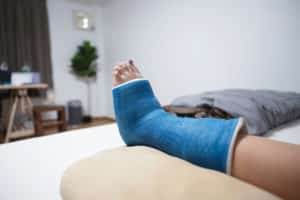
Whether you have a fractured ankle, tibia, or femur, elevation is key for sleeping with a broken leg. Place a pillow just under your ankle so it is above your heart for a fractured ankle. For a higher-up fracture, such as your tibia or femur, slide the pillow up to elevate the injured area. Typically, the higher the break is, the more pillows you need to make yourself comfortable. A femur break will require pillows under your thigh and more pillows underneath the length of your leg since your cast will position your leg straight. Think of making a wedge shape, with one pillow just underneath your bum, stacking more pillows progressively down your leg to your ankle. Adjustable bases come in clutch during these times, and a broken bone is a common impetus for people to switch to an adjustable base. They end up enjoying the convenience of them well after the broken bone has healed.
There are general things that will help you sleep no matter what the fracture is. Though it can be tempting to languish all day in bed eating bonbons, forcing yourself to be active and eating healthy foods will provide your body with more oxygen and the nutrients it needs to heal and help keep the muscles surrounding your injured bones engaged. All broken bones take time to heal, some more than others, and staying on top of your pain management protocol is key to ensuring you stay as comfortable as possible. Don’t wait until the pain is unbearable to take an anti-inflammatory or other pain medication.
A simple thing like coughing or sneezing with broken ribs can be painful enough to bring a grown man to his knees. Clutching a pillow to brace against your ribs in the event of a sudden expulsion of air will help make it less painful. Broken ribs make it difficult to be comfortable in just about any position, and if you’ve had a collapsed lung, it’s all the more tricky. Experiment with different positions to find what feels the most comfortable for you. Keeping your body in a semi-upright position by placing some pillows underneath your neck and upper back will help alleviate some pain.
Pillows can shift around while you sleep; an adjustable base will keep your body at a specific elevation throughout the night.
Though it seems counterintuitive, sometimes sleeping on the injured side can be helpful as it restricts the movement of your ribs and allows your body to breathe more deeply on the uninjured side. Broken ribs can make deep breathing a less-than-thrilling endeavor, but it’s important to ensure your body gets enough oxygen. Practice breathing while awake, and count to five as you inhale and five as you exhale.
You guessed it, elevation is key here too. Prop yourself upright in bed using pillows or sleep in a recliner. Place pillows around your shoulders to keep you in place during the night and a firm one underneath your shoulders to support your body.
Sleeping with a broken pelvis can be tricky. But most doctors recommend that you sleep on your back with your legs straight to take maximum weight off your healing pelvis. Practice good sleep hygiene by minimizing your use of electronics before bed, having a clean room, and dimming the lights.
Avoid sleeping on your stomach because this causes spinal misalignment and can put additional stress on your back. Sleeping on your back with a pillow underneath your knees will relieve pressure on your back. Alternatively, lying on your side with your knees bent, and a pillow between them can help maintain a neutral position for your spine.
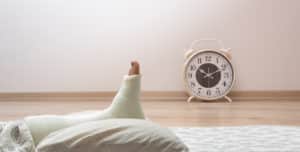
Dig out those extra pillows at the top of your closet – you’ll need them. Elevate your injured area by placing a pillow underneath it. While a broken pelvis or rib can be difficult to elevate, a broken limb will be easier to keep above your heart, and this will help encourage blood flow and reduce swelling and inflammation in the affected area. You don’t need to raise your arm or leg as high as you can get it, though, and this can be more detrimental than helpful. A 30-degree slope is about perfect.
Getting good quality rest with health issues like circulatory disorders, frequent headaches, or broken bones can be a double-edged sword. On one side, it can be more challenging to sleep. Conversely, your body needs more sleep than ever to rest and heal. Mattresses are always improving, and adjustable bases are becoming the norm for many households. The sleep specialists at Mattress World Northwest will listen to your concerns and help you find the perfect mattress to make your nights and days as comfortable as possible.
« What Your Hormones Do While You’re Sleeping and How You Can Help Them | How Sleep Helps You Heal »
While you can't go wrong with any of our mattresses, here are a few factors you'll want to consider before making a purchase: your sleep position (and if you have a partner, theirs as well), the size of the space, and a price point. If you have any questions, rest easy knowing that our team is happy to help you find that perfect fit.
| Size | Dimensions |
|---|---|
| Twin | 38″ wide x 75″ long x 9.25″ tall |
| Twin XL | 38″ wide x 80″ long x 9.25″ tall |
| Full | 54″ wide x 75″ long x 9.25″ tall |
| Queen | 60″ wide x 80″ long x 9.25″ tall |
| King | 76″ wide x 80″ long x 9.25″ tall |
| Cal King | 72″ wide x 84″ long x 9.25″ tall |
| Split King (2pk) | 38″ wide x 80″ long x 9.25″ tall |
Mattress World Northwest makes it easy to choose the right foundation for your space and lifestyle.
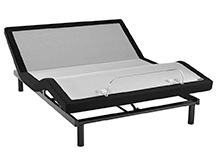

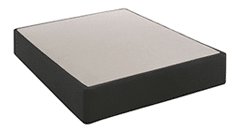
Reliable support for your boxspring and mattress.
